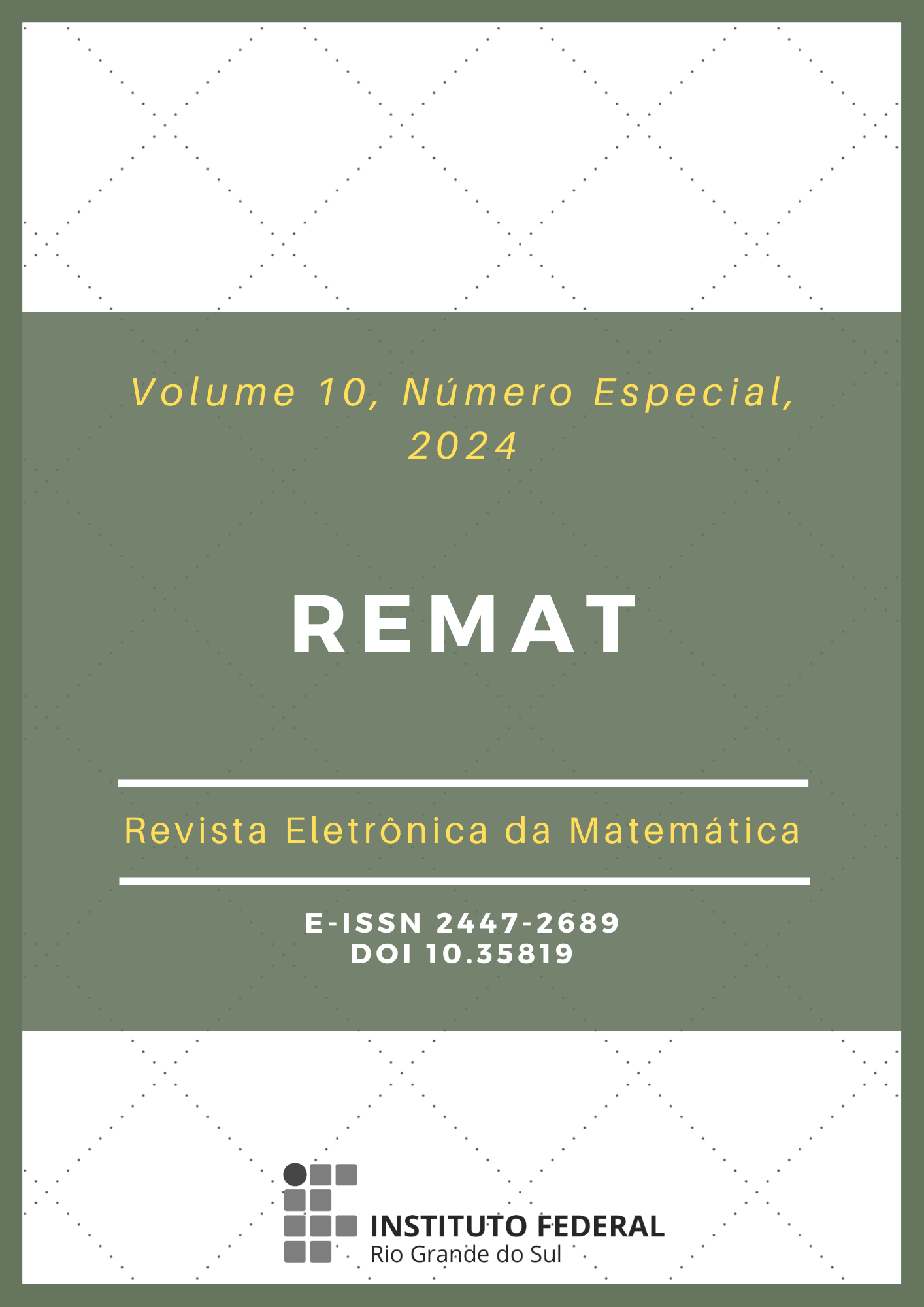Tool for simulating tumor growth in various regions of the human body in three dimensions
DOI:
https://doi.org/10.35819/remat2024v10iespecialid7102Keywords:
scientific computing, numerical methods and applications, cellular automaton, marching cubes, cancerAbstract
Cancer is a disease characterized by the uncontrolled growth of abnormal cells in the body. It is a complex and multifaceted disease that has challenged researchers and doctors for decades. The ability to visualize and understand tumor growth can provide valuable insights into how cancer develops and spreads, leading to significant improvements in cancer diagnosis, treatment, and prevention. The three-dimensional tumor growth simulation tool that is being developed is an important step in this direction. It allows for detailed visualization of tumor growth in different parts of the human body, which can provide valuable insights into how cancer develops and spreads. Additionally, the ability of this tool to simulate tumor growth in different parts of the body means that it can be used to study a wide range of cancer types. This tool utilizes a cellular automaton and a small-world network to create connections between cells, allowing for a more accurate representation of organ and tumor structures. Furthermore, it allows for the loading of configurations and parameters from external files, providing great flexibility to the tool and allowing for customization of the simulation to the specific needs of each case. For 3D rendering, the Marching Cubes technique is used, which enables detailed and accurate three-dimensional representation of tumors.
Downloads
References
BARREDO, D. Viera. Autómata celular estocástico en redes complejas para el estudio de la invasión, migración y metástasis del cáncer. Tutores: Reinaldo Rodríguez Ramos; Ruben Interian; Ariel Ramírez Torres; Rocío Rodríguez Sánchez. 2019. 132 f. Trabajo de diploma (Licenciatura en Ciencia de la Computación) - Universidad de La Habana, La Habana, 2019. Available in: https://raw.githubusercontent.com/Krtucho/cellular_automata/main/docs/darien-tesis.pdf. Access at: July 5, 2024.
CIRNE, Marcos Vinícius Mussel; PEDRINI, H. Marching Cubes Technique for Volumetric Visualization Accelerated With Graphics Processing Units. Journal of the Brazilian Computer Society, São Paulo, v. 19, p. 223-233, 2013. DOI: https://doi.org/10.1007/s13173-012-0097-z.
DEUTSCH, Andreas; DORMANN, Sabine. Cellular Automaton Modelling of Biological Pattern Formation: Characterization, Applications, and Analysis. Boston: Springer, 2007. v. 8, p. 105-106. DOI: https://doi.org/10.1007/s10710-006-9021-7.
DORMANN, Sabine; DEUTSCH, Andreas. Modelling of self-organized avascular tumor growth with a hybrid cellular automaton. In Silico Biology, Osnabrück, v. 3, p. 393-406, 2002. Available in: https://pubmed.ncbi.nlm.nih.gov/12542422/. Access at: July 6, 2024.
HU, R.; RUAN, X. A simple cellular automaton model for tumor-immunity system. In: INTERNATIONAL CONFERENCE ON ROBOTICS, INTELLIGENT SYSTEMS AND SIGNAL PROCESSING, 2003, Changsha. Proceedings [...]. [S. l.]: IEEE. v. 2, p. 1031-1035. Available in: https://ieeexplore.ieee.org/abstract/document/1285731. Access at: July 7, 2024.
INTERIAN, Ruben; RODRÍGUEZ-RAMOS, Reinaldo; VALDÉZ-RAVELO, Fernando; RAMÍREZ-TORRES, Ariel; RIBEIRO, Celso C.; CONCI, Aura. Tumor growth modelling by cellular automata. Mathematics and Mechanics of Complex Systems, [s. l.], v. 5, n. 3-4, p. 239-259, 2017. DOI: https://doi.org/10.2140/memocs.2017.5.239.
JIAO, Yang; TORQUATO, Salvatore. Emergent Behaviors from a Cellular Automaton Model for Invasive Tumor Growth in Heterogeneous Microenvironments. PLOS Computacional Biology, San Francisco, v. 7, n. 12, p. 1-14, 2011. DOI: https://doi.org/10.1371/journal.pcbi.1002314.
KANSAL, A. R.; TORQUATO, Salvatore; CHIOCCA, E. A.; DEISBOECK, T. S. Emergence of a Subpopulation in a Computational Model of Tumor Growth. Journal of Theoretical Biology,[s. l.], v. 207, n. 3, p. 431-441, 2000. DOI: https://doi.org/10.1006/jtbi.2000.2186.
KANSAL, A. R.; TORQUATO, S.; HARSH IV, G. R.; CHIOCCA, E. A.; DEISBOECK, T. S. Simulated Brain Tumor Growth Dynamics Using a Three-Dimensional Cellular Automaton. Journal of Theoretical Biology, [s. l.], v. 203, n. 4, p. 367-382, 2000. DOI: https://doi.org/10.1006/jtbi.2000.2000.
LORENSEN, W. E.; CLINE, H. E. Marching Cubes: A High Resolution 3D Surface Construction Algorithm. ACM SIGGRAPH Computer Graphics, New York, v. 21, n. 4, p. 163-169, 1987. Available in: https://people.eecs.berkeley.edu/~jrs/meshpapers/LorensenCline.pdf. Access at: July 7, 2024.
VERHULST, Pierre F. Notice sur la loi que la population poursuit dans son accroissement. Correspondance Mathematique et Physique, [s. l.], v. 10, p. 113-121, 1838.
VISUTSAK, Porawat. Marching Cubes and Histogram Pyramids for 3D Medical Visualization. Journal of Imaging, Bangkok, v. 6, n. 88, 2020. DOI: https://doi.org/10.3390/jimaging6090088.
WATTS, Duncan J.; STROGATZ, Steven H. Collective dynamics of "small-world" networks. Nature, [s. l.], v. 393, p. 440-442, 1998. DOI: https://doi.org/10.1038/30918.
Downloads
Published
Issue
Section
License
Copyright (c) 2024 REMAT: Revista Eletrônica da Matemática

This work is licensed under a Creative Commons Attribution 4.0 International License.
REMAT retains the copyright of published articles, having the right to first publication of the work, mention of first publication in the journal in other published media and distribution of parts or of the work as a whole in order to promote the magazine.
This is an open access journal, which means that all content is available free of charge, at no cost to the user or his institution. Users are permitted to read, download, copy, distribute, print, search or link the full texts of the articles, or use them for any other legal purpose, without requesting prior permission from the magazine or the author. This statement is in accordance with the BOAI definition of open access.













 https://orcid.org/0000-0002-0893-7426
https://orcid.org/0000-0002-0893-7426


















